
A Powerful Design Partner
Pictured: UX/UI design and development student Sushree Swayamsidha using a VR headset in The HIVE.
When Woohee Byun (M.A. ’25) arrived at the School of Architecture and Design, her tech background, in her own words, wasn’t strong. “Just a year ago, I was using free ChatGPT like most people use Google,” Byun says.
After working on projects including the redesign of a popular yoga app to better support people with physical limitations where she used eye-tracking technology and ChatGPT to structure her research plan, map out testing flows, and analyze interview data, Byun, a graduate of the Master of Arts in UX/UI Design and Development program, has a completely different relationship with artificial intelligence (AI). “AI completely changed how I work. Before this program, I didn’t think it would become such a central part of my work process,” she says. “Everyone was talking about how AI might replace jobs, but for me, it’s done the opposite—it’s helped me grow. I work faster, make smarter design decisions, and have the confidence to take on things I never would’ve tried before.”
Byun isn’t alone. Across the School of Architecture and Design, students are learning through a hands-on, real-world approach that rather than something to be feared, AI can be embraced as a powerful design partner.
“When I work with students, they learn that [AI is] not this ominous thing in the cloud that does tasks automatically,” says Matias del Campo, Ph.D., associate professor of architecture and director of M.S., Architecture, Computational Technologies. “It’s really a dialogue partner in a creative process. As soon as students lose that fear, as soon as they lose that anxiety, it becomes really interesting, because then their creativity kicks in and they find ways of using those different AI models in very innovative, [sometimes practical, sometimes] wonderfully strange ways.”
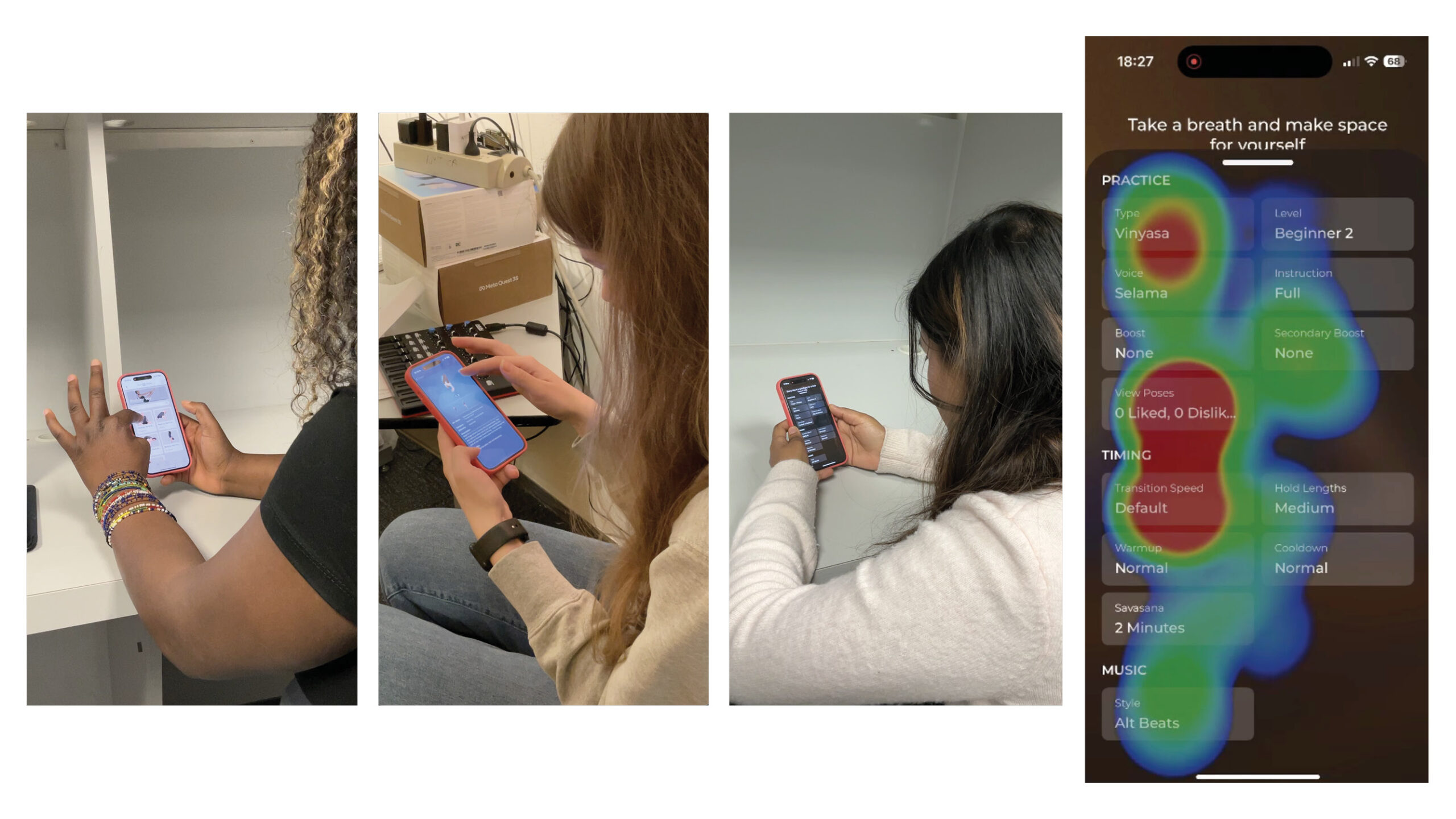
Across the school’s three departments—architecture, interior design, and digital art and design—students and faculty alike are engaging with what del Campo is calling a “new ecology of architecture.” Reflecting New York Institute of Technology’s long-standing commitment to innovation and technology, the School of Architecture and Design is at the forefront of AI and emerging technology, expanding its integration within the curriculum, including research and student projects.
“New York Tech has long positioned itself at the forefront of cutting-edge technology, and the School of Architecture and Design actively reflects that commitment,” says Di Wu, teaching assistant professor of interior design. Wu has focused on incorporating AI into the early stages of the four-year interior design B.F.A. program. “Across the department, we regularly integrate robotics, digital fabrication, advanced design tools, and biomaterials into both teaching and research. These technologies are not treated as add-ons but are embedded in our curriculum and studio culture.”
Kevin Park, M.F.A., assistant professor and chair of digital art and design, notes, “AI integration reflects our proactive, industry-aligned curriculum philosophy. Students are equipped not only with emerging technology skills but also with the critical frameworks needed to innovate responsibly. Through hands-on projects, research labs, and collaborations with industry partners, they gain practical, future-ready experiences that prepare them to lead across UX design, game development, digital storytelling, and product innovation.”
Collaborations by Design
AI experts in their respective fields, the school’s faculty are leading the charge in what assistant professor of architecture Ezio Blasetti, M.S., describes as “a kind of general wave all across the university that AI is not only a game changer but also something that we need to [earnestly] engage and invest time and effort.” Blasetti’s enthusiasm is emulated among his colleagues.
“The integration of our laboratories into programs at both the graduate and undergraduate levels, along with enhancements to our facilities, software, and computational technology, has allowed us to attract exceptional faculty with strong research agendas, cutting-edge expertise, and recognized accomplishments,” says Dean Maria Perbellini, M. Arch. “Recruited from top universities, [these faculty members possess] the expertise we need to anticipate and integrate the rapid technological advancements transforming the way we conceive, design, and construct the built environment [and beyond].”
In the architecture department, student projects speak to the school’s emphasis on innovation and an interdisciplinary approach. “To really progress toward a positive impact on AI in architecture, you need that interdisciplinary collaboration,” says del Campo. At the undergraduate level, students are introduced to off-the-shelf AI models such as ChatGPT and MidJourney. “Not only as generators of content,” says Sandra Manninger, Ph.D., associate professor of architecture. “But as systems to be understood, questioned, and strategically deployed within architectural workflows.” At the graduate level, where students build their own datasets and edit existing and custom-made AI models, they are pushed to go further.
“My research project mainly focused on the use of accessible AI tools available online and the methods of integrating them in an architectural workflow that simulates real-world applications,” says Omar Aljabery (M.S. ’25), who majored in architecture, computational technologies. “Going beyond image generation, rather focusing on the transformation of 2-D into 3-D, which can be achieved by prompting large language models (LLM).”
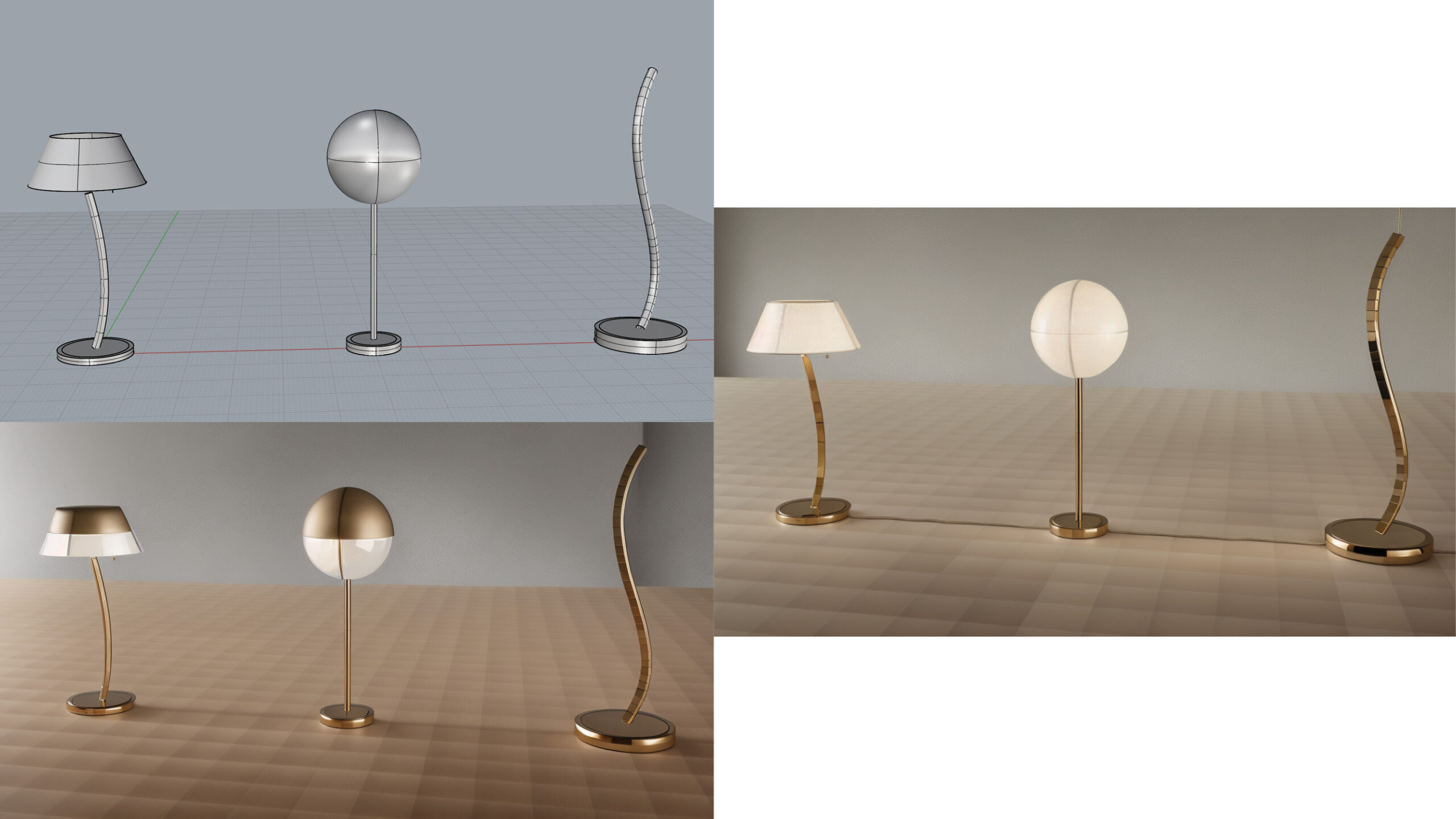
Other architecture student projects have included a B.Arch thesis where AI was used to drive material circularity through urban mining. Waste, such as eggshells were repurposed into new types of biogenic materials used as healthy building blocks for affordable housing. A multidisciplinary research project with a team of undergraduate and graduate students led by professor Christian Pongratz, M.Arch., director of M.S., Health and Design, is using AI to accelerate and optimize the design of low carbon geopolymer concrete and regenerative local bio or earth-based construction materials for 3-D printed buildings. “By collecting online research data and integrating ongoing in-house lab results to train and evaluate machine learning models,” says Pongratz, “We aim to improve prediction of material behavior, speed up development, and reduce failed experiments.”
Faculty research projects have created industry collaborations benefiting students, such as Blasetti’s research on computational design techniques, in collaboration with Runway ML, that combine generative AI video, Gaussian splatting, and neural radiance field (NeRF) 3-D reconstruction methods. “Through support from Runway ML, I introduced generative AI tools into my design studio, focusing on video-based design visualization,” Blasetti says. “Their sponsorship provided our students with unlimited access to Runway’s generative models, empowering them to explore emerging workflows in architectural representation.”
A proposed name change for the Master of Architecture, Computational Technologies to Master of Design and Artificial Intelligence will further solidify the program’s focus on AI and design while a new AI minor in design will offer a cross-disciplinary program that “will be discipline-specific and will serve our undergraduate programs across all three departments,” says Perbellini.
In the Department of Interior Design, where the aim is to help students develop a critical understanding of how AI can be used as a creative and technical partner in design, student Rina Novaj learned the power of AI through projects like “AI-Aided Color Play,” a key assignment in Wu’s Color in Space class. In the first phase of the course, students work hands-on with real paint and brushes to explore foundational principles like color theory, matching, and harmonies. In the second phase, students are tasked with creating color schemes for three virtual brands and then generating AI-assisted interior space designs.
“The “AI-Aided Color Play” project I worked on was eye-opening as it was my first semester experimenting with AI,” says Novaj. “Originally, I had a pessimistic view of AI, thinking it is nonsense. However, with the prompts that I gave to ChatGPT’s Dall-E and Adobe Firefly, I noticed that this could be used to a greater extent.” Through those created prompts, Novaj explained her design intentions for the retail space of a Moroccan perfume brand with “a very luxurious and rich feel,” she says. “While feeding these tools different prompts, I saw how powerful AI really is. To my surprise, the AI tools truly came up with some gorgeous images of the store design for this brand.”
“My primary goal is to help students feel confident and comfortable engaging with rapidly evolving technologies like AI,” says Wu. “I want them to see AI not as a threat or shortcut, but as a tool that—when used thoughtfully—can enhance their design process and expand creative possibilities.”

Wu brings an interdisciplinary and industry-partner advantage to the classroom. This includes Materials Atlas, a knowledge-sharing platform for sustainable building materials, where “AI plays a central role in enabling interdisciplinary collaboration,” she says, and Future Materials Library, what Wu describes as an interdisciplinary hub that will support her courses and serve as a research platform and space for collaboration with industry partners. “By providing students with direct access to emerging materials and fabrication methods, the library is designed to spark innovation and help bridge the gap between academic exploration and real-world application.”
In the Department of Digital Art and Design, a proactive approach, Park says, ensures that students engage with real-world applications of emerging technologies and are prepared to design, prototype, and innovate in an increasingly AI-driven and immersive digital landscape. Along with actively integrated real-world platforms and emerging tech partnerships, this means continually evolving and expanding the curriculum and infrastructure.
“Our programs, courses, and research labs, including The HIVE (Home for Innovation, Visualization, and Exploration) and the Virtual Production Lab, have embedded AI, machine learning (ML), computer vision (CV), extended reality, and physical computing into both student projects and faculty research initiatives,” he says. Newly introduced programs including the M.F.A in Graphic Design and Media Innovation, the M.S. in Digital Product Design, and new concentrations in Game Design and 2-D Animation, have all embedded artificial intelligence components, along with machine learning and computer vision. “Across all major coursework and studio projects, AI/ML/CV is embedded not only as a tool but also as an active collaborator in design and research.”
Working Together
Acting as a unifying thread across all the programs, Park notes, AI encourages interdisciplinary collaboration at both the undergraduate and graduate levels, which is reflected in student projects.
“In digital art, 2-D animation, game design, and graphic design, students collaborate on projects that combine storytelling, interactive design, branding, and user experience development powered by AI technologies,” says Park. “For example, game design students often work with 3-D/2-D animation students to develop AI-driven character narratives and interactive environments.”
At the graduate level, students in UX/UI design and graphic design and media innovation engage in interdisciplinary research projects that span architecture, counseling, behavioral science, chemistry, engineering, computer science, and education.
“The most recent cross-department project I worked on was a UX redesign for a Korean grocery e-commerce site,” says Byun. The team included students from both the UX/UI Design and Development program and the Graphic Design and Media Innovation program. The client was experiencing performance issues, including a low conversion rate and high cart abandonment rate. To address these issues, they conducted multiple user research methods, such as diary studies, eye-tracking heatmaps, and click maps, using tools like Microsoft Clarity and Tobii Eye Tracking.
“By leveraging AI, we were able not only to expedite the process but also to expand the user research, gaining a clearer picture of users’ natural behavior on the platform. It also showed me that AI works best when people bring in different perspectives and shape it together, just like any other design tool.”
Across the school, a critical mindset is just as important as learning how to use the tools. “At New York Tech, we emphasize not just the use of cutting-edge tools like AI, but also the critical thinking and ethical understanding needed to use them responsibly,” says Wu. “We prepare students to be more productive, adaptable, and competitive in a rapidly evolving marketplace. They learn how to harness technology to enhance their design thinking, problem-solving, and communication skills—all of which are essential for success in today’s interdisciplinary and innovation-driven industries.”
The outcome is that students now produce richer, more sophisticated work at faster rates, Park says. “Several have already secured jobs and internships because their portfolios demonstrate advanced AI literacy and project-ready skillsets. These success stories reflect how our commitment to integrating AI and emerging technologies directly translates into meaningful career opportunities and real-world impact.”
For the School of Architecture and Design, the goal is not just to prepare students for today, but for the future. “Ultimately, our goal is to foster a new generation of leaders equipped with the skills and knowledge necessary to shape the built environment of tomorrow and to navigate the complexities of rapidly evolving disciplines,” says Perbellini. “It is exciting to be part of a school that is progressing, not afraid of the unknown, with a community of talented people at the forefront of innovation.”
By Joann Plockova
My primary goal is to help students feel confident and comfortable engaging with rapidly evolving technologies like AI. I want them to see AI not as a threat or shortcut, but as a tool that—when used thoughtfully—can enhance their design process and expand creative possibilities.
Teaching Assistant Professor Di Wu
More News
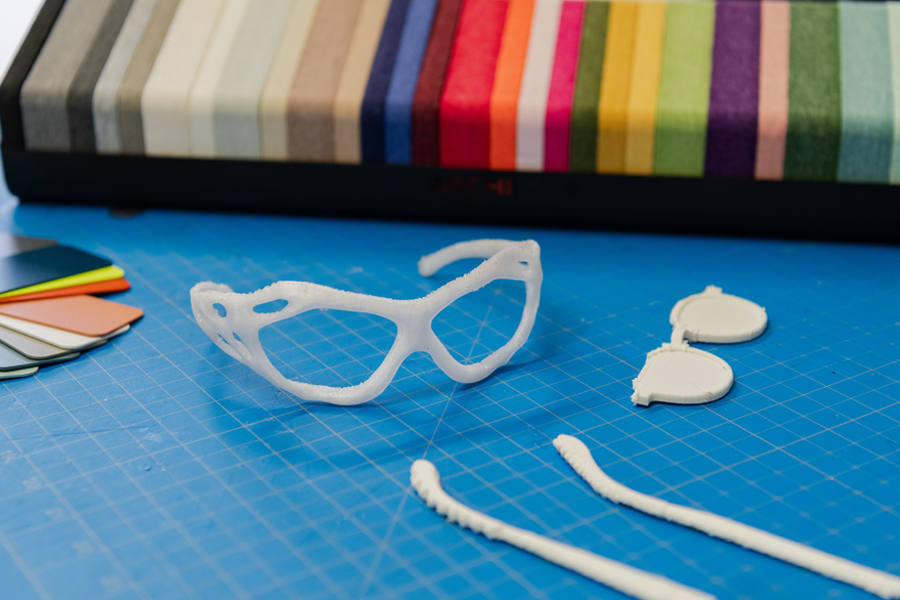
“Envisioning” More Inclusive Eyewear
As part of a collaborative initiative between New York Tech and the global eyewear company Marcolin, students from the School of Architecture and Design and NYITCOM teamed up to develop potential eyewear solutions for neurodivergent populations.
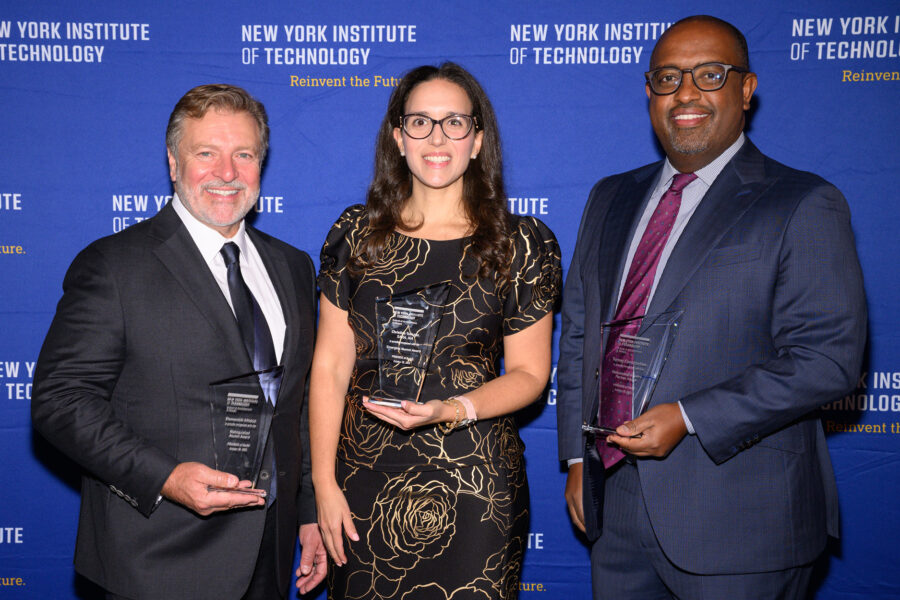
FRIENDS Sets New Fundraising Record
On October 30, the School of Architecture and Design celebrated its 17th Annual Alumni and FRIENDS Reception, raising a record-breaking $550,000 in support of student scholarships, technology upgrades, lectures, study abroad, and new initiatives.
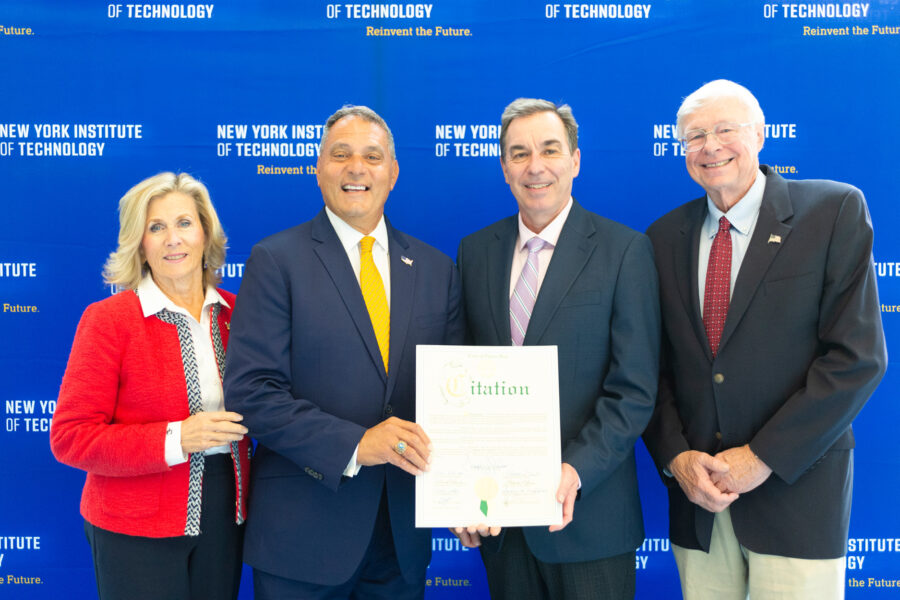
Startup Tech Central Officially Opens
Members of New York Tech and the local community gathered to celebrate the grand opening of Startup Tech Central, a resource for students to transform ideas into real-world impact.
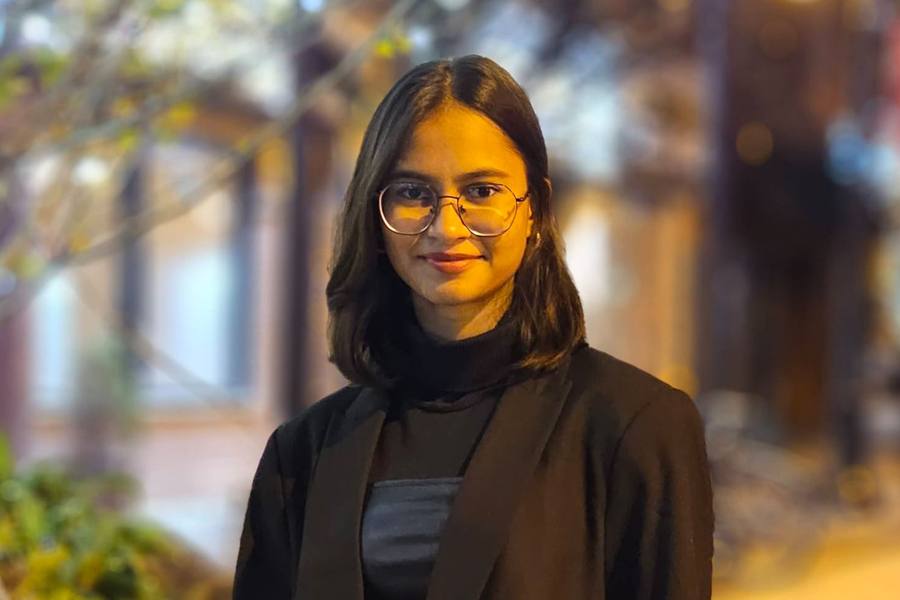
Intern Insight: Shikha Gandhi
Architecture student Shikha Gandhi’s internship with the New York City Department of Environmental Protection offered everything she hoped for as an aspiring sustainable and community-centered architect.
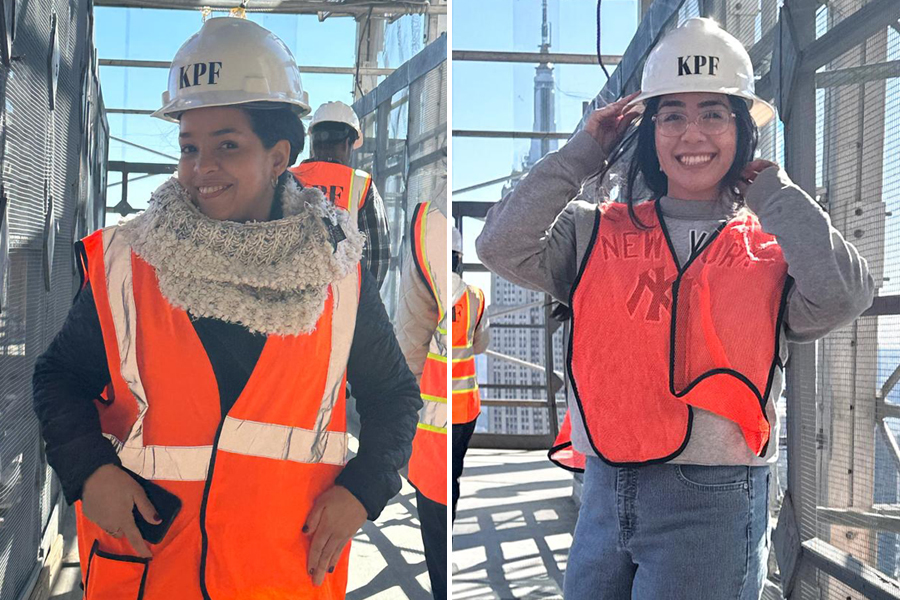
Intern Insight: It Takes Two
Graduate architecture students Yeisy Batista Perez and Angela Madrigal spent five months interning with the well-known, Manhattan-based architecture firm Kohn Pedersen Fox.
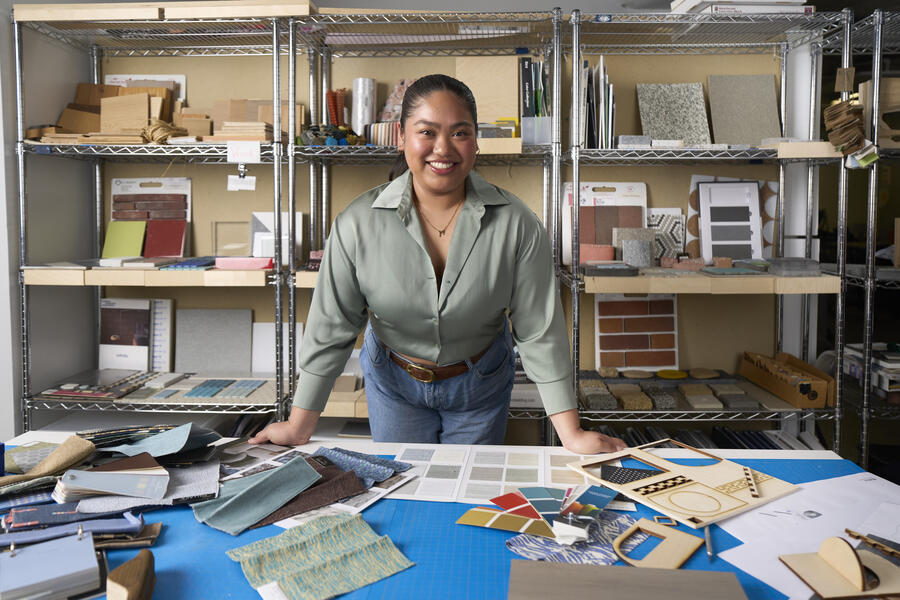
Intern Insight: Tiffany Joy Amoncio
Interior design student Tiffany Joy Amoncio doubled down this summer and secured two separate internships to explore the discipline.